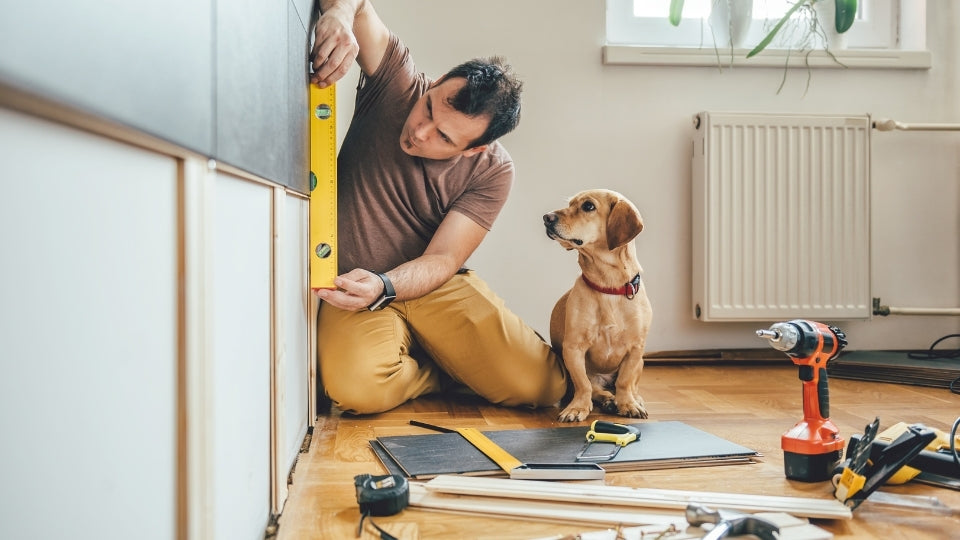
Keeping dust under control when drilling holes in your walls part 2
Share
Here we have part 2 of our 10 tips for you to keep dust and noise down on your next DIY renovation project; however, you could skip it all and just use our hack that will eliminate dust and noise altogether, well at least for small projects such as hanging picture frames and running cables on tight spots.
Our range of ezifix products will suffice for a wide range of applications where dust and noise are not a risk you can take.
Check the full range here: https://injmould.com.au/collections/all-products

Now let's get to the final five tips
Tip 5: Cover Heat & A/C Vents
One of the fastest ways for the dust to circulate through your house is through air ducts and vents. Not to mention it will also wreck your air filters. Close off any of these passages that you can and then seal them with plastic and tape.
Even with the area sealed off, I recommend you change out your air filter once the project is completed. It's something you should do every few months anyway, so after a remodel is as good a time as any to replace it.
Tip 6: Create Single Entry/Exit Points
There is no faster way for dust to get around your house unnoticed than for you and your crew to be moving through a bunch of different entryways. Limit access to one doorway and seal off all other doors. Again, use windows as the primary way of removing materials if you can, and just try to keep moving throughout the house limited.
At your access point, install a solid dust containment door kit with a zipper. Keep it closed as much as you can. Even leaving it open for a little while can allow plenty of dust to slip through.

Tip 7: Protect Your Floors
Taking the time to protect and cover your floors both inside and outside your project area will save you a lot of time and headaches in the long run. You want to create distinct pathways to and from your project area and the bathroom you plan to use.
With carpet, it's sometimes hard to tell exactly how much dust can get into it, so utilize some protective carpet film and press down. If you have kids or pets, you don't want them getting sick from dust that sneaked its way into the carpet.
Tip 8: Keep Your Boots On
This may seem counter-intuitive, but I recommend you keep your boots on. Taking them on and off will quickly become a hassle, so it's simpler to get protection for them.
Step 9: Cut Material Outside
Many people think that dust containment stops with the demo portion, so they will take down all their protective measures. Unfortunately, few things generate more dust than cutting and sanding drywall.
I recommend doing as much of the cutting outside for drywall and then bringing the pieces in afterwards. Keep your protective barriers up until everything is complete.
Tip 10: Keep a Vacuum Cleaner Handy
As I said in the last step, sanding drywall can be an annoying generator of dust. Most pros don't have too much trouble with this, but if you're an amateur like me, the story can be very different. Keep that vacuum cleaner handy throughout the project, and do your best to clean up dust as you go. The more you keep dust levels low during the project, the more minor cleanup you'll have at the end. I recommend, at the very least, sucking up the work area dust at the end of each workday.
Our range of ezifix products will suffice for a wide range of applications where dust and noise are not a risk you can take.
Check the full range here:https://injmould.com.au/collections/all-products

And, of course, if you're going to be generating a lot of dust, you should always have protective masks and/or respirators on anytime you're in the work area.
I hope you found my ten suggestions for keeping dust down during the DIY project helpful. Dust can be a real problem if you don't keep it contained, so doing everything you can to minimize and stay on top of it will give you a lot of peace of mind.
